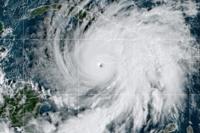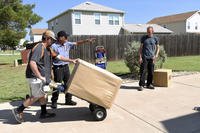Tornadoes
-->
Tornadoes are nature's most violent storms. They can appear suddenly without warning and can be invisible until dust and debris are picked up or a funnel cloud appears. Planning and practicing specifically how and where you take shelter is a matter of survival. Be prepared to act quickly. Keep in mind that while tornadoes are more common in the Midwest, Southeast and Southwest, they can occur in any state and at any time of the year, making advance preparation is vitally important.
Step 1: Get a Kit
- Get an Emergency Supply Kit, which includes items like non-perishable food, water, a battery-powered or hand-crank radio, extra flashlights and batteries.
- Store it in your shelter location
Step 2: Make a Plan
Prepare Your Family
- Make a Family Emergency Plan. Your family may not be together when disaster strikes, so it is important to know how you will contact one another, how you will get back together and what you will do in case of an emergency.
- Plan places where your family will meet, both within and outside of your immediate neighborhood.
- It may be easier to make a long-distance phone call than to call across town, so an out-of-town contact may be in a better position to communicate among separated family members.
- You may also want to inquire about emergency plans at places where your family spends time: work, daycare and school. If no plans exist, consider volunteering to help create one.
- Determine in advance where you will take shelter in case of a tornado warning:
- Storm cellars or basements provide the best protection.
- If underground shelter is not available, go into an interior room or hallway on the lowest floor possible.
- In a high-rise building, go to a small interior room or hallway on the lowest floor possible.
- Stay away from windows, doors and outside walls. Go to the center of the room. Stay away from corners because they attract debris.
- A vehicle, trailer or mobile home does not provide good protection. Plan to go quickly to a building with a strong foundation, if possible.
- If shelter is not available, lie flat in a ditch or other low-lying area. Do not get under an overpass or bridge. You are safer in a low, flat location.
- Plan to stay in the shelter location until the danger has passed.
- Take a Community Emergency Response Team (CERT) class from your local Citizen Corps chapter. Keep your training current.
- Find out how to keep food safe during and after and emergency by visiting www.FoodSafety.gov.
Step 3: Be Informed
Familiarize yourself with the terms that are used to identify a tornado hazard.
- A tornado watch means a tornado is possible in your area.
- A tornado warning is when a tornado is actually occurring, take shelter immediately.
Listen to Local Officials
Learn about the emergency plans that have been established in your area by your state and local government. In any emergency, always listen to the instructions given by local emergency management officials.
For further information on how to plan and prepare for tornadoes as well as what to do during and after a tornado, visit: Federal Emergency Management Agency, NOAA Watch or American Red Cross.




























